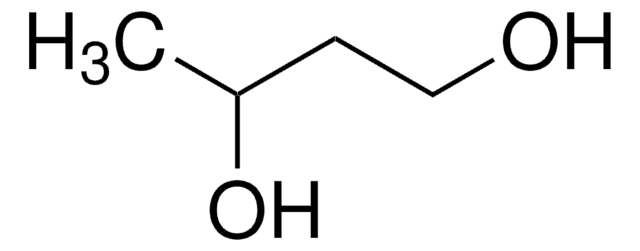1265515
USP
Ethylene glycol
United States Pharmacopeia (USP) Reference Standard
Sinónimos:
Ethylene glycol, 1,2-Ethanediol
About This Item
Productos recomendados
grade
pharmaceutical primary standard
vapor density
2.1 (vs air)
vapor pressure
0.08 mmHg ( 20 °C)
autoignition temp.
752 °F
expl. lim.
15.3 %
manufacturer/tradename
USP
refractive index
n20/D 1.431 (lit.)
bp
195-198 °C
mp
−13 °C (lit.)
density
1.113 g/mL at 25 °C (lit.)
application(s)
pharmaceutical (small molecule)
format
neat
SMILES string
OCCO
InChI
1S/C2H6O2/c3-1-2-4/h3-4H,1-2H2
InChI key
LYCAIKOWRPUZTN-UHFFFAOYSA-N
¿Está buscando productos similares? Visita Guía de comparación de productos
General description
Application
- Propylene Glycol
- Polyethylene Glycol 3350
- Noncrystallizing Sorbitol Solution
- Polyoxyl 40 Hydrogenated Castor Oil
- Maltitol Solution
- Sorbitol Solution
- Sorbitol Sorbitan Solution
- Dapagliflozin Propanediol
Analysis Note
Other Notes
related product
signalword
Warning
hcodes
Hazard Classifications
Acute Tox. 4 Oral - STOT RE 2 Oral
target_organs
Kidney
Storage Class
10 - Combustible liquids
wgk_germany
WGK 1
flash_point_f
239.0 °F - open cup
flash_point_c
115 °C - open cup
Elija entre una de las versiones más recientes:
Certificados de análisis (COA)
It looks like we've run into a problem, but you can still download Certificates of Analysis from our Documentos section.
Si necesita más asistencia, póngase en contacto con Atención al cliente
¿Ya tiene este producto?
Encuentre la documentación para los productos que ha comprado recientemente en la Biblioteca de documentos.
Los clientes también vieron
Protocolos
99%; Glycerol, ≥99.5%; Tetraethylene glycol, 99%
GC Analysis of Class 2 Residual Solvents on OVI-G43
Nuestro equipo de científicos tiene experiencia en todas las áreas de investigación: Ciencias de la vida, Ciencia de los materiales, Síntesis química, Cromatografía, Analítica y muchas otras.
Póngase en contacto con el Servicio técnico








